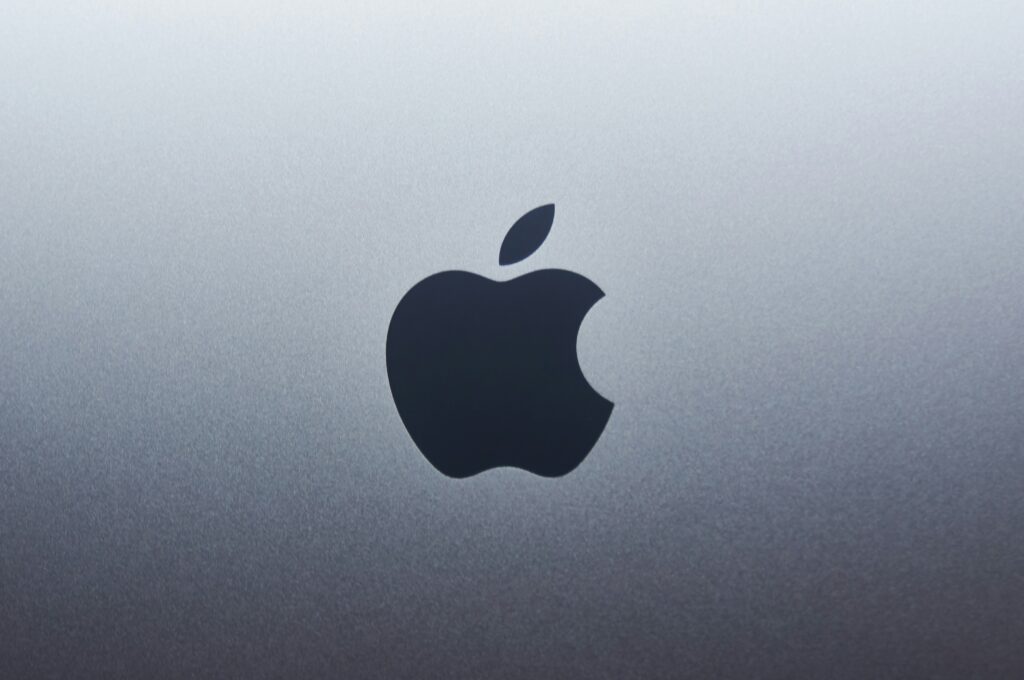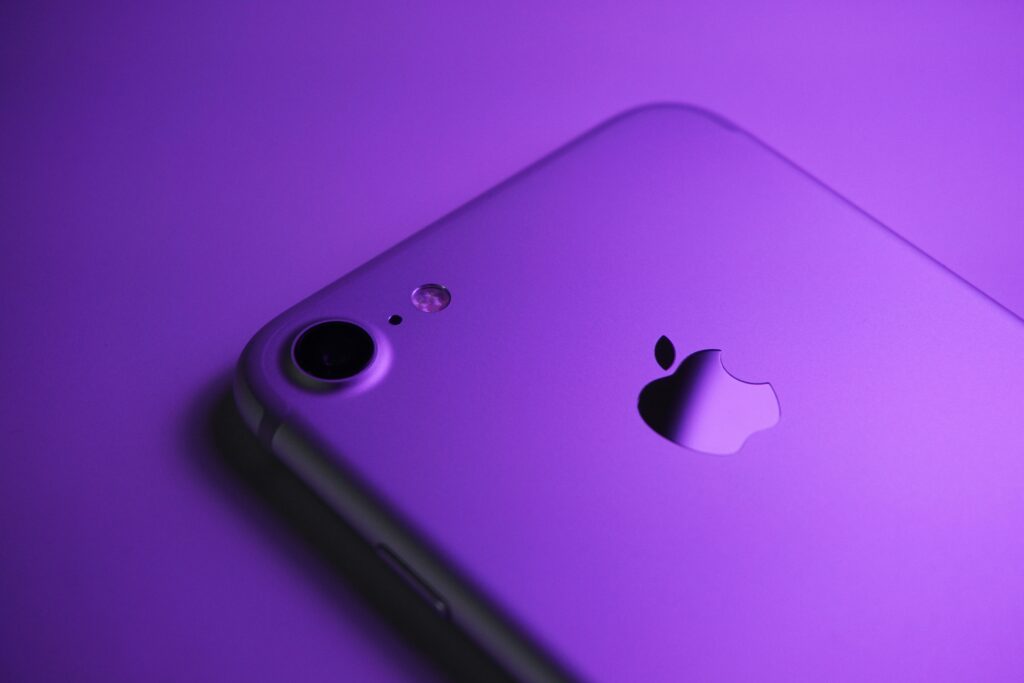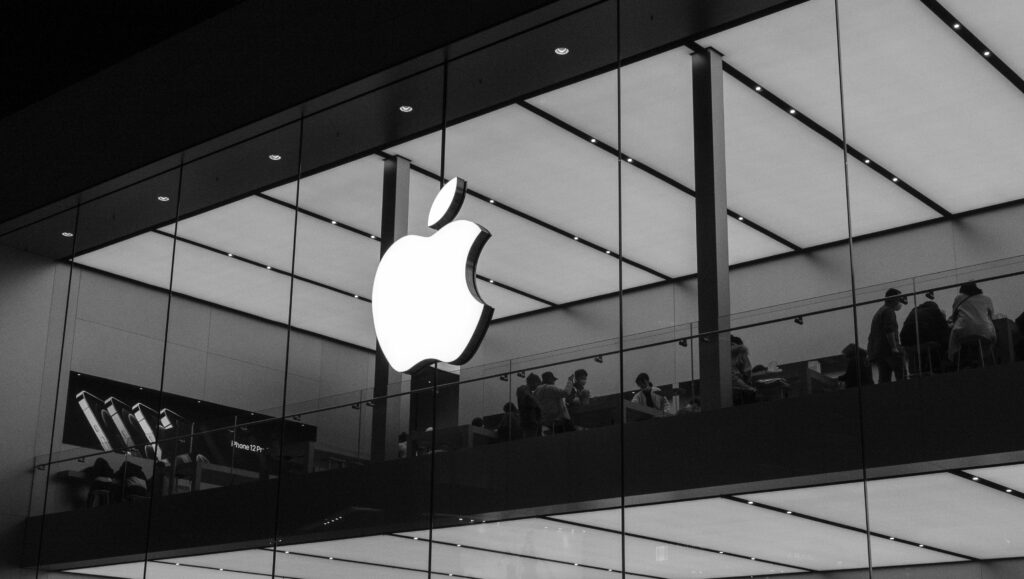Apple Logo: Meaning, History, Design Influences, and Evolution

Apple, one of the most iconic brands in the world, is instantly recognizable by its minimalist and sleek logo – the apple with a bite taken out of it. But have you ever wondered about the meaning, history, design influences, and evolution behind this iconic emblem? In this article, we will dive deep into the fascinating world of the Apple logo and explore the story behind its creation and transformation over time.
Understanding the Apple Logo
The Symbolism Behind the Apple Logo
When we think of an apple, the first thing that comes to mind is often knowledge. This connection dates back to the story of Adam and Eve, where the forbidden fruit represented the pursuit of knowledge and the consequences of disobedience. This symbolism carries over to the Apple logo, which represents innovation, creativity, and the quest for knowledge.

Another interpretation of the Apple logo is its association with simplicity and elegance. Just like the sleek design of Apple products, the logo itself is clean and free from unnecessary embellishments. It speaks to the company’s commitment to minimalism and user-friendly technology.
Furthermore, the Apple logo’s shape, a simple silhouette of an apple with a bite taken out of it, has sparked various interpretations over the years. Some see it as a nod to Alan Turing, the father of theoretical computer science, who tragically committed suicide by biting into an apple laced with cyanide. Others view it as a symbol of the company taking a bite out of the forbidden fruit of knowledge, embracing innovation fearlessly.
The Evolution of the Apple Logo’s Design
The journey of the Apple logo began in 1976 when Steve Jobs and Steve Wozniak co-founded the company. The first logo, known as the “Newton Crest,” featured a detailed illustration of Sir Isaac Newton sitting under an apple tree. While it represented the company’s namesake and paid homage to the scientific revolution, this complex design didn’t resonate with consumers.
Seeking a more appealing image, Apple revamped its logo in 1977. The new logo, called the “Rainbow Apple,” featured an apple with rainbow-colored stripes. This vibrant design not only captured the essence of the 1970s counterculture but also represented the company’s commitment to diversity and innovation.
As Apple continued to evolve, so did its logo. In 1998, the company introduced the “Monochrome Apple” logo, a sleek and modern take on their iconic symbol. This minimalist design reflected Apple’s shift towards a more streamlined and sophisticated brand image, aligning with their innovative product designs and user-friendly approach.
The History of the Apple Logo
The Genesis of the Apple Logo
The birth of the Apple logo can be traced back to the friendship between Steve Jobs and Steve Wozniak. Determined to create a brand that stood out, Jobs approached Rob Janoff, a graphic designer, to design a logo that was simple yet distinctive. Inspired by the story of Sir Isaac Newton and the legend of the apple tree, Janoff created the first Apple logo, featuring Newton himself.
However, this intricate design didn’t resonate with consumers, leading Jobs to seek a new logo that better reflected the company’s values and image.
After the initial logo featuring Sir Isaac Newton, Apple decided to take a different direction. The company wanted a logo that was more modern and appealing to a wider audience. This led to the creation of the iconic Apple logo we know today.
The new logo, a simple apple with a bite taken out of it, was designed to be easily recognizable and timeless. It symbolized knowledge and the acquisition of wisdom, aligning with Apple’s mission to make technology accessible and user-friendly.

Key Changes in the Logo Over the Years
In 1977, Apple decided to overhaul its logo. The famous rainbow colors were introduced, representing the company’s ethos of creativity, innovation, and diversity. This logo quickly became an emblem of the brand’s success and revolutionized the graphic design landscape.
Over time, Apple made subtle modifications to its logo to keep up with the changing times. In 1998, the colorful stripes were replaced by a monochrome silhouette. This new logo symbolized sophistication and modernity, aligning with Apple’s transition into a global tech powerhouse.
As Apple continued to evolve, so did its logo. In 2001, the logo underwent another transformation, becoming sleeker and more streamlined. The bitten apple remained at the core of the design, but it was rendered in a more polished and minimalist style, reflecting Apple’s commitment to simplicity and elegance in its products.
Influences on the Apple Logo Design
The Role of Steve Jobs in Logo Design
Steve Jobs, known for his meticulous attention to detail, played a significant role in the design of the Apple logo. He understood the power of visual communication and recognized that a well-crafted logo could evoke emotions and build brand loyalty. By partnering with gifted designers, Jobs ensured that the Apple logo reflected the company’s philosophy and resonated with its customers.
The Impact of Technological Advancements on the Logo
As technology advanced, the Apple logo evolved along with it. The simplicity of the logo allowed it to adapt effortlessly to different mediums and embrace the digital age. Whether it was displayed on packaging, devices, or digital platforms, the logo maintained its clarity and impact, reflecting the seamless integration of design and technology that Apple is renowned for.
The Evolution of the Apple Logo
The Transition from Rainbow to Monochrome
In 1998, Apple made a bold move by transforming its logo into a sleek monochrome representation. The new design, devoid of any colors, portrayed a sense of maturity and sophistication. This shift mirrored the company’s transition from a niche computer manufacturer to a global leader in consumer electronics.

The Modern Apple Logo: Simplicity and Elegance
Taking simplicity to new heights, Apple redesigned its logo once again in 2001. This sleek, silver emblem became instantly recognizable, capturing the essence of Apple’s aesthetic and design philosophy. The absence of words or elaborate graphics further exemplified Apple’s confidence in its iconic brand.
The Apple Logo in the Contemporary World
The Logo’s Influence on Brand Recognition
No discussion about the Apple logo would be complete without acknowledging its monumental impact on brand recognition. The simple yet distinctive logo has become synonymous with innovation and premium quality. In a saturated market, the Apple logo stands out, effortlessly capturing the attention of consumers and leaving a lasting impression.
The Future of the Apple Logo
As Apple continues to push boundaries and redefine industries, it’s only natural to wonder about the future of its logo. Will it continue to evolve, adapting to the changing landscape? Or will it remain timeless, a symbol of Apple’s unwavering commitment to excellence and innovation? Only time will tell, but one thing is certain – the Apple logo will always be a mark of distinction and innovation.
In conclusion, the Apple logo holds a storied history, intertwining elements of symbolism, design influences, and evolution. From its humble beginnings to its iconic status today, the logo has become a symbol of Apple’s ethos and brand identity. No matter what the future holds, one thing is for sure – the Apple logo will continue to captivate our imagination and inspire generations to come.
Inspired by the evolution and significance of the Apple logo? Your brand deserves a symbol that’s just as impactful. Meet Boon, the innovative software that blends your vision with the power of Artificial Intelligence to craft a custom logo that resonates with your brand’s story. Whether you’re in tech, hospitality, or any other industry, Boon helps you engage your audience, weave compelling narratives, and fortify your business presence. Ready to create a logo that stands the test of time? Let’s make a logo!
